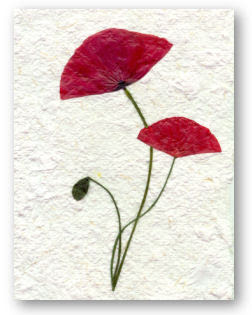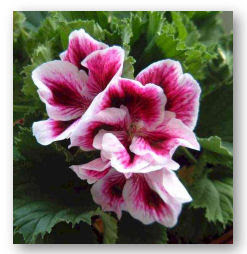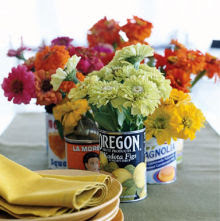
If you haven’t done so already, now is the time to make herb butter.
If you’ve never had herb butter before, I promise you – you are in for a treat!
Using herb butter really kicks a person’s cooking skills up a notch.
I use herb butter on cooked vegetables - even corn on the cob, fish, pasta, grilled chicken or steak, and of course on
really on really good bread. I also use a pat in the pan when cook omelets, or for sautéing different things such as shrimp. Harvest your herbs in the morning after the dew has dried, gently wash them and allow them to dry. You can carefully blot them dry with a towel, or place them in a salad spinner to speed things along.
Here’s a very basic recipe for herb butter to get you started:
Herb Butter
makes about 1/2 cup (equivalent of 1 stick)
1/2 cup (1 stick) unsalted butter, softened to room temperature (you may use regular, salted butter if you wish, just eliminate the sea salt)
1/4 cup finely chopped mixed herbs (such as basil, thyme, sage, parsley, dill, chives, tarragon, oregano, marjoram or rosemary)
1 teaspoon coarse sea salt
In a small bowl, combine all ingredients. Mix well until herbs are distributed evenly. Place mixed butter on a piece of waxed paper or parchment, shape into a cylinder or disk, and seal ends by twisting. Chill in refrigerator until firm, at least an hour.
Herb butter keep in refrigerator for about 2 weeks and in the freezer for several months.
Here are some of my favorite herb butter combinations:
*Italian: oregano, basil, parsley and chives
*Chives and parsley: especially great for steak, or baked potatoes
* Pesto butter: just basil, with a bit of grated parmesan cheese - absolutely decadent on tortellini pasta!
* Dill and parsley: wonderful on green beans, and other veggies.
* all purpose: I use just about all my herbs – chives, basil, oregano, thyme, parsley, tarragon, rosemary, and a tiny bit of sage.
Here’s one more hint for you. For the ultimate herb butter, use fancy European butter. In my grocery store I can sometimes find Irish or Scandinavian butter. Herb butter made with these decadent butters is out of this world, and is worthy of your best home baked sourdough bread.
Do you have a favorite way to use herb butter?
Labels: herbs, recipes


















